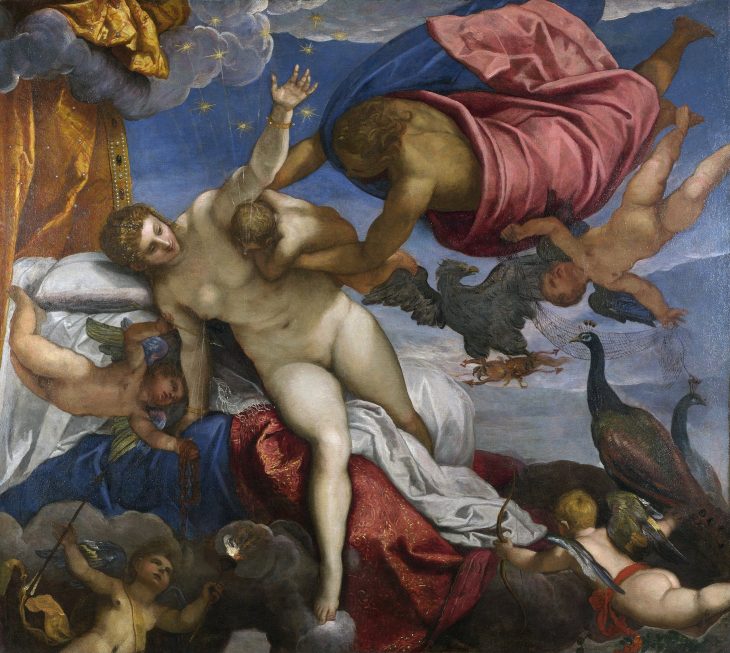Tintoretto
Stories behind the Works of Art
We could make this publication thanks to small donations. How is 3 minutos de arte supported?
The Origin of the Milky Way (1575). Tintoretto
Tintoretto was a Venetian mannerist who, like all mannerists, made his virtuosity and his style (“maniera”) very explicit. He painted spectacular scenes in spaces that seemed scenographic. And to this he added a “dramatic” charge that can be considered a preview of the Baroque.
He recreated the myth of the birth of the Milky Way in this work. This myth explains why our place in the universe has such a crazy name.
The protagonists of the myth are Zeus, his wife Hera, and Zeus’ favorite son, Heracles (whom we know better by his Roman name, Hercules).
Heracles is not Hera’s son. Zeus, perhaps the most powerful god on Olympus, had a love life full of infidelities with goddesses and mortals. He had a short-lived affair with Alcmene, a mortal, and from this encounter, Heracles was born.
Zeus adored his son and wanted him to be immortal, like a true god. But for this, he had to be nursed by Hera, who, furious at her husband’s infidelity, would not accept such a task. What’s more, she sent a couple of snakes to the child’s cradle to kill him, although the baby, with his supernatural strength, strangled them as if nothing had happened.
As in every myth, there are different versions of how Hera ends up breastfeeding Heracles. Tintoretto represented the one in which Zeus holds his son to the breasts of his wife when she is asleep. The goddess wakes up violently and tears the child away. And the drops of milk that spread across the sky give origin to the Milky Way.
The Milky Way is a beam of light that crosses the sky (a group of very distant stars). The word “galaxy” comes from Latin “galaxias,” which in turn comes from Greek γαλαξίας (galaxías) which means “milk.”
Movement, complicated perspectives (we see foreshortenings and a serpentine figure), drama. A simple story represented in the spectacular “maniera” of the appropriately named “Il Furioso.”
Recommended links:
Characteristic Elements of Venetian School.
The Venetian School of the 16th Century.
Miracle of the Slave (1547-48).
Ultramarine Blue in Venetian Painting.
Artistic Movements I: from Classical Antiquity to Rococo.
You can also find more material using the search engine.




0 Comments